From Grunge to Glory: The Ultimate Guide to Pearl Jam’s Albums
From Grunge to Glory: The Ultimate Guide to Pearl Jam’s Albums
Introduction
Pearl Jam’s journey from Seattle clubs to global stages is one of rock’s most enduring stories. Since their explosive debut in 1991, the band has consistently challenged themselves while shaping the alternative rock landscape. Each album offers a unique reflection of their evolution, from raw grunge beginnings to expansive, experimental sounds. This Pearl Jam album review series explores the records that defined not only their career but also a generation.
Before diving into the albums, let’s look at the most asked questions about the band.
Most Asked Questions
Who is in the band Pearl Jam?
The current lineup features Eddie Vedder on vocals and guitar, Stone Gossard on rhythm guitar, Mike McCready on lead guitar, Jeff Ament on bass, and Matt Cameron on drums.
What drummers have been in Pearl Jam?
Over the years, Pearl Jam has worked with several drummers. Dave Krusen played on Ten, followed briefly by Matt Chamberlain. Dave Abbruzzese contributed during the early 1990s, while Jack Irons took over in the mid-1990s. Matt Cameron, formerly of Soundgarden, has been their drummer since 1998.
Why did Pearl Jam name their album Ten?
The title comes from basketball star Mookie Blaylock, whose jersey number was 10. Pearl Jam originally wanted to name the band after him, but legal concerns forced a change. They instead used “Ten” as the title of their debut album.
Where is the band Pearl Jam from?
Pearl Jam formed in Seattle, Washington, in 1990. The city’s grunge movement provided the perfect backdrop for their rise.
How did Pearl Jam get their name?
The band has offered more than one story. Eddie Vedder once joked that it came from his great-grandmother Pearl’s peyote-laced jam recipe. However, the more accepted explanation is that Jeff Ament suggested “Pearl,” and the band later added “Jam” as a nod to Neil Young’s extended jam sessions.
The Albums
Ten (1991)
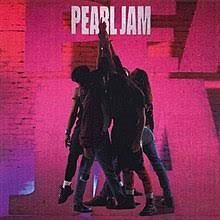
Pearl Jam’s debut, Ten, arrived in 1991 and immediately reshaped alternative rock. This Pearl Jam album review begins with the record that defined the grunge era. From the explosive opener “Once” to the anthemic “Alive,” the album carries raw emotion and urgent intensity.
The singles “Even Flow” and “Jeremy” showcased Eddie Vedder’s distinctive vocals and storytelling ability. Each track revealed themes of alienation, personal struggle, and resilience, connecting deeply with disillusioned youth.
Musically, Ten blends heavy riffs with melodic passages, creating an accessible yet powerful sound. The rhythm section drives each song with precision, while the dual guitars deliver grit and atmosphere.
Critics praised Ten for its honesty and energy, and fans responded by driving it to multi-platinum sales. Ultimately, this Pearl Jam album review confirms Ten as a career-defining release and one of the most influential rock debuts ever recorded.
Vs. (1993)

Pearl Jam followed their debut with Vs. in 1993, a darker and more aggressive record. This Pearl Jam album review highlights how the band pushed beyond grunge stereotypes while maintaining intensity. The album opens with “Go,” a fierce statement of defiance, setting the tone for the collection.
“Daughter” brought a more melodic side, pairing tender instrumentation with powerful lyrics about family conflict. Meanwhile, “Rearviewmirror” and “Animal” showcased relentless energy, capturing Pearl Jam’s raw live spirit on record.
Lyrically, Vs. addressed themes of isolation, anger, and social tension. Eddie Vedder’s vocal delivery conveyed both vulnerability and urgency, while the band’s musicianship gave the songs lasting impact.
Commercially, the album debuted at number one and sold millions worldwide. Critically, Vs. cemented Pearl Jam’s position as leaders of alternative rock. This Pearl Jam album review confirms it as one of their boldest and most uncompromising works.
Vitalogy (1994)

Released in 1994, Vitalogy marked a daring shift in Pearl Jam’s sound. This Pearl Jam album review explores how the band embraced experimentation while retaining emotional depth. With its eclectic mix of punk, folk, and raw rock, the album stood apart from earlier releases.
“Corduroy” and “Not for You” delivered biting commentary on fame and individuality, while “Better Man” became one of Pearl Jam’s most enduring songs. The tracks showcased Vedder’s ability to balance intensity with vulnerability.
Musically, Vitalogy combined unconventional arrangements with bursts of stripped-down energy. The record challenged listeners with experimental tracks but rewarded them with moments of striking clarity.
The album earned critical acclaim and achieved significant commercial success, solidifying Pearl Jam’s reputation for risk-taking. Overall, this Pearl Jam album review shows how Vitalogy captured both the chaos and creativity of the mid-1990s.
No Code (1996)

Pearl Jam’s No Code arrived in 1996 and signaled a bold departure from their earlier sound. This Pearl Jam album review highlights how the band leaned into experimentation, blending garage rock, folk, and worldbeat influences. The result was one of their most eclectic records.
“Hail, Hail” brought fierce energy, while “Who You Are” explored a more meditative, rhythmic approach. Songs like “Off He Goes” revealed a quieter, reflective side, demonstrating the band’s versatility.
Lyrically, the album addressed themes of identity, self-exploration, and the challenges of fame. Eddie Vedder’s vocals shifted between raw urgency and quiet restraint, underscoring the record’s contrasts.
Though No Code initially divided critics and fans, it has since earned respect as a daring and personal work. Ultimately, this Pearl Jam album review confirms No Code as an important step in their evolution, pushing boundaries with fearless creativity.
Yield (1998)
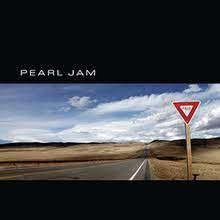
Pearl Jam released Yield in 1998, returning to a more straightforward rock sound after their experimental detours. This Pearl Jam album review emphasizes the band’s renewed focus on melody and accessibility. The result was a balanced and powerful record that reconnected them with a wider audience.
Key singles included “Given to Fly,” which soared with uplifting energy, and “Wishlist,” a reflective piece filled with poetic imagery. “Do the Evolution” added a fierce, biting critique of modern society, showing the band’s enduring edge.
Musically, Yield featured tighter arrangements and more collaborative songwriting, giving each member’s influence room to shine. Eddie Vedder’s vocals carried both intimacy and fire, complementing the album’s variety.
The album earned critical praise for its maturity and strong hooks. Commercially, it performed well, cementing Pearl Jam’s longevity. Overall, this Pearl Jam album review confirms Yield as one of their most confident and enduring works.
Binaural (2000)
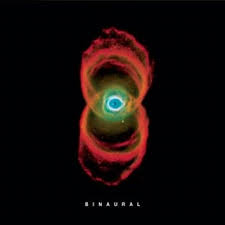
With Binaural, released in 2000, Pearl Jam ventured into more atmospheric and moody territory. This Pearl Jam album review explores the unique recording approach that defined the album’s sound. The use of binaural techniques created a spacious, immersive listening experience unlike anything in their catalog.
Standout tracks included “Nothing as It Seems,” a haunting exploration of unease, and “Light Years,” a poignant reflection on loss. Both songs highlighted the emotional depth that anchored the record.
Musically, the album leaned toward darker tones, with layered guitars and experimental textures shaping its identity. Eddie Vedder’s lyrics dealt with introspection and existential themes, enhancing the atmosphere.
Though Binaural did not match earlier commercial highs, it earned respect for its ambition and creativity. Ultimately, this Pearl Jam album review shows how Binaural expanded the band’s sonic boundaries, proving their willingness to innovate two decades into their career.
Riot Act (2002)

Released in 2002, Riot Act captured Pearl Jam’s response to turbulent times. This Pearl Jam album review highlights its politically charged and deeply personal themes. Written after 9/11 and personal losses, the record balanced grief, reflection, and calls for resilience.
“I Am Mine” became a defining single, affirming individual strength amid uncertainty. Meanwhile, “Love Boat Captain” carried heartfelt weight, addressing the tragic Roskilde festival accident that shaped the band’s outlook.
Musically, Riot Act leaned into folk-rock influences, blending acoustic textures with harder rock moments. The result felt introspective yet forceful, a reflection of their evolving artistry.
Critics praised its depth and honesty, even if it lacked mainstream singles. Fans embraced the album for its emotional sincerity. Overall, this Pearl Jam album review confirms Riot Act as a bold statement of survival and conviction in a changing world.
Pearl Jam (2006)
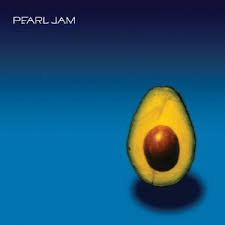
Pearl Jam’s self-titled album, released in 2006, is often called “the avocado album” because of its cover art. This Pearl Jam album review highlights the record as a return to a heavier, more direct rock sound. The band leaned into urgent energy while still offering moments of lyrical depth.
Singles like “Life Wasted” and “World Wide Suicide” delivered fierce political commentary alongside relentless guitar-driven force. “Gone” added a reflective counterbalance, showing the band’s ability to pair aggression with heart.
Musically, the album combined punk energy with classic hard rock riffs. Eddie Vedder’s passionate vocals gave every track a sense of urgency and conviction.
Critics welcomed the band’s revitalized sound, while fans embraced it as a return to form. Commercially, it charted strongly worldwide. This Pearl Jam album review affirms Pearl Jam as a defiant and powerful statement midway through their career.
Backspacer (2009)
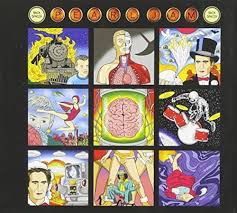
In 2009, Pearl Jam released Backspacer, an album that embraced brevity, positivity, and a more pop-friendly sound. This Pearl Jam album review highlights the band’s lighter tone compared to their darker earlier works. The record radiated energy while exploring themes of love, resilience, and renewal.
“The Fixer” burst with upbeat hooks, while “Just Breathe” showcased Eddie Vedder’s tender, introspective side. Songs like “Got Some” balanced rock immediacy with melodic precision, making the album accessible and vibrant.
Musically, Backspacer benefited from Brendan O’Brien’s crisp production, ensuring clarity and momentum across the record. The concise runtime kept the pacing sharp, leaving little room for filler.
Critics praised its refreshing tone and strong songwriting. Fans appreciated hearing a revitalized Pearl Jam embrace optimism. Ultimately, this Pearl Jam album review shows Backspacer as a concise, spirited chapter that broadened their legacy.
Lightning Bolt (2013)
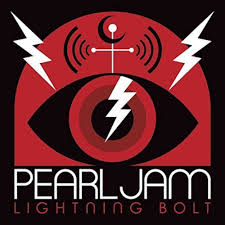
Pearl Jam returned in 2013 with Lightning Bolt, a record blending raw energy with thoughtful balladry. This Pearl Jam album review emphasizes its mix of driving rockers and reflective songs, capturing both urgency and maturity.
“Mind Your Manners” brought punk-inspired speed, while “Sirens” showcased soaring emotion and vulnerability. These contrasting singles defined the album’s dual nature.
Musically, Lightning Bolt offered a mix of anthemic rock, heartfelt ballads, and experimental flourishes. Eddie Vedder’s vocals carried intensity and warmth, grounding the diverse tracklist in consistency.
Themes ranged from personal resilience to social awareness, reflecting the band’s enduring curiosity and engagement. The balance of aggression and tenderness gave the record depth and replay value.
Critics praised its ambition and fans embraced its variety. This Pearl Jam album review confirms Lightning Bolt as a powerful testament to their ability to evolve while staying true.
Gigaton (2020)
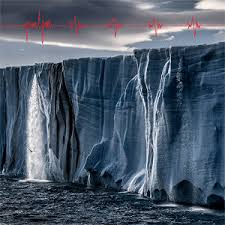
After a seven-year break, Pearl Jam returned in 2020 with Gigaton, an ambitious and timely record. This Pearl Jam album review explores its blend of experimental rock and socially conscious themes. The band embraced new sounds while delivering urgent messages.
“Dance of the Clairvoyants” showcased electronic textures and rhythmic innovation, surprising longtime fans. Meanwhile, “Superblood Wolfmoon” delivered raw, guitar-driven energy that echoed their classic rock roots.
Lyrically, the album addressed climate change, political unrest, and personal resilience. Eddie Vedder’s voice carried both warning and hope, guiding listeners through turbulent subject matter.
Musically, Gigaton mixed atmospheric arrangements with sharp, urgent riffs. The record balanced experimentation with the core intensity fans expect.
Critics praised its relevance and adventurous spirit, calling it a bold late-career triumph. This Pearl Jam album review confirms Gigaton as a vital, forward-looking addition to their legendary discography.
Dark Matter (2024)

Released in 2024, Dark Matter signaled Pearl Jam’s continued vitality more than three decades into their career. This Pearl Jam album review highlights its raw, high-energy rock sound. With Andrew Watt producing, the record delivered immediacy and punch.
The title track, “Dark Matter,” roared with urgency, while other songs showcased their enduring chemistry and commitment to direct, powerful songwriting. The performances captured the feel of a band still hungry to make a statement.
Lyrically, the album balanced social commentary with personal reflection, keeping true to Pearl Jam’s trademark depth. Eddie Vedder’s passionate vocals drove the messages home with conviction.
Musically, the band leaned on dynamic riffs, propulsive rhythms, and tight arrangements. Every song carried an unfiltered energy.
Critics praised its vitality, while fans embraced it as a reaffirmation of their rock roots. This Pearl Jam album review establishes Dark Matter as proof of their lasting relevance.
Pearl Jam’s journey from Ten to Dark Matter reflects more than three decades of fearless creativity and evolution. Each record adds a distinct layer to their story, whether through raw grunge intensity, experimental risks, or reflective ballads. This Pearl Jam album review series highlights not only their versatility but also their enduring relevance in rock music.
The band never settled into one formula. Instead, they pushed boundaries while staying true to the honesty that first connected them with fans. Their catalog offers something for every listener, from anthems that defined the 1990s to bold statements that resonate today.
Ultimately, Pearl Jam’s albums serve as both a chronicle of their career and a mirror of the times. For longtime fans and new listeners alike, revisiting each Pearl Jam album review shows why they remain one of the most important bands in modern rock.
Recent Posts
Queen studio albums: A Review
Phil Collins Albums Ranked & Reviewed – Complete Guide to Every Studio Album
The best of Massive Attack
Let’s Make Magic
Book Your Event DJ Now




